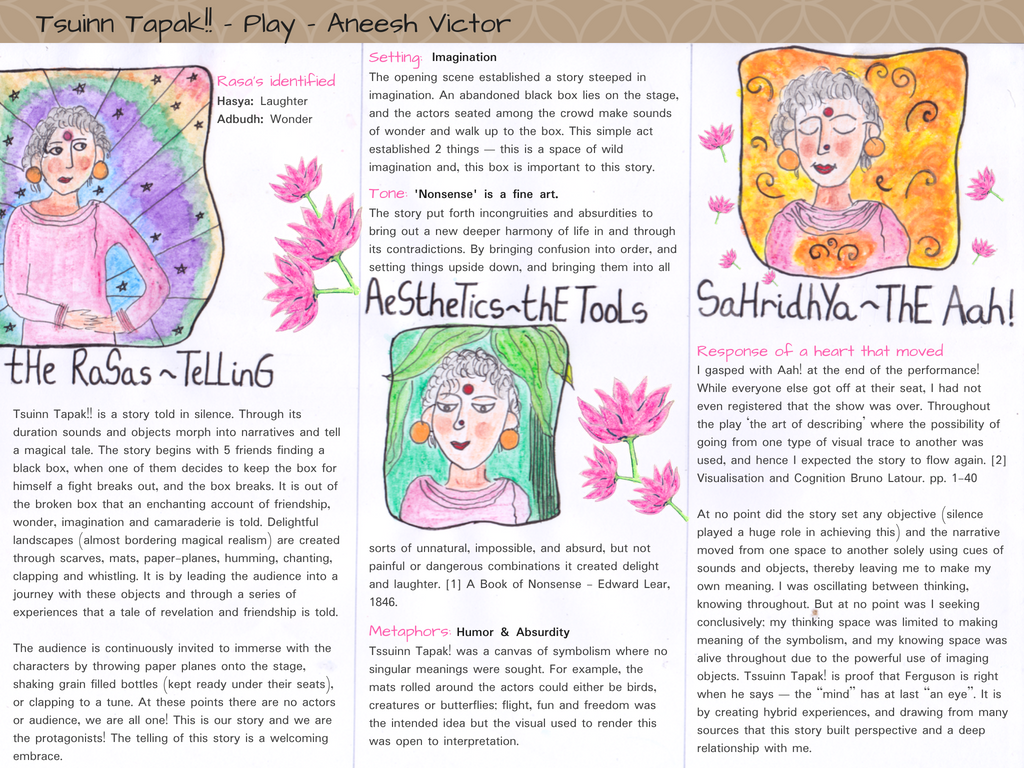Raskia to Tssuinn Tapak
On Independence Day I watched the most delightful play I have seen in a long-long time, Tssuinn Tapak (pronounced Su-eee tup-ak) at @Rangashankara.
My thoughts are analysed through the Rasa framework which I have written about in my previous blog. My focus continues to be around how a story builds a relationship with the audience, the idea of Sahridhaya / The Aah! is core to this understanding.
My readings on 'Visualisation and Cognition - Drawing Things Together' by Bruno Latour and 'Nonsense as a Fine Art' have also helped me with defining my cognitive experiences. As Latour says, "The most powerful explanations, that is those that generate the most out of the least, are the ones that take writing and imaging craftsmanship into account. They are both material and mundane since they are so practical and modest, so pervasive, so close to the hands and the eye that they escape attention. Each of the debates the grandiose scheme and conceptual dichotomies and replaces them with simple modifications in the way in which groups of people argue with each other using paper, signs, prints, and diagrams. Despite their different methods, fields, and goals, this strategy of deflation links a range of very different studies and endows them with a style which is both ironic and refreshing." [1]
Tssuinn Tapak used, silence and objects as modes of explanation to convey a modest story and this was such a refreshing take! Read more in my analysis, and if Tssuinn Tapak playing anywhere around you, watch it!
References:
[1] Visualisation & Cognition: Drawing Things Together - Bruno Latour. in Knowledge and Society Studies in the Sociology of Culture Past and Present. (Vol 6, pp.1- 40)  |
| My immediate reaction after viewing the play. |




Comments
Post a Comment